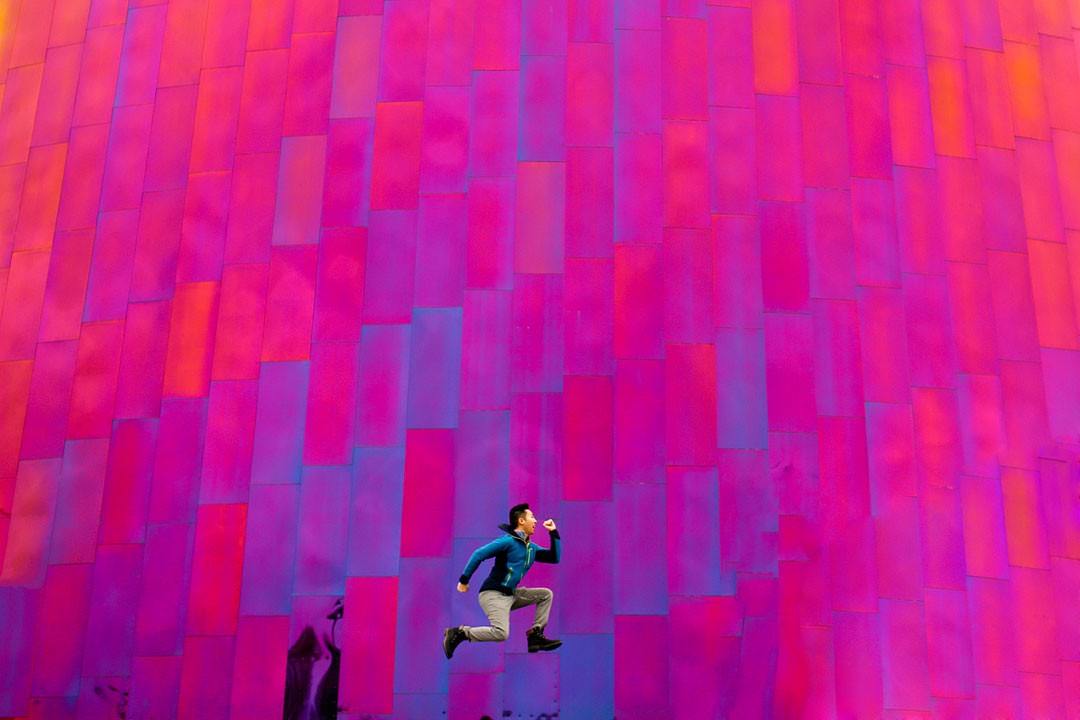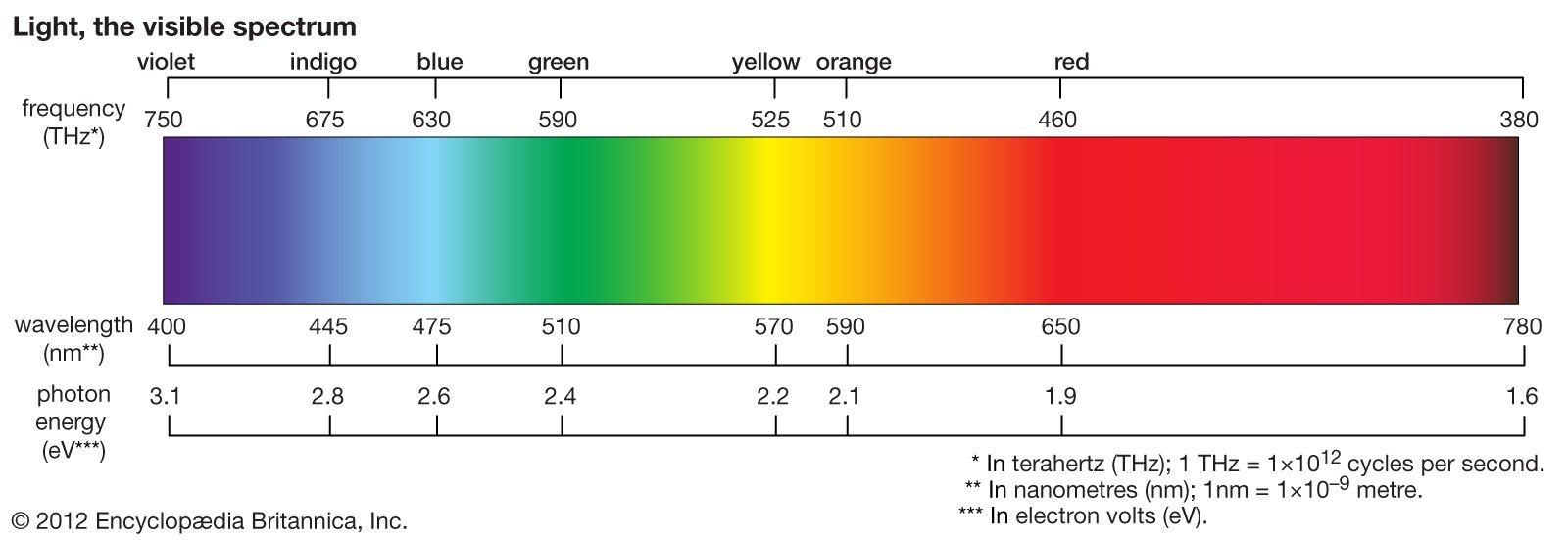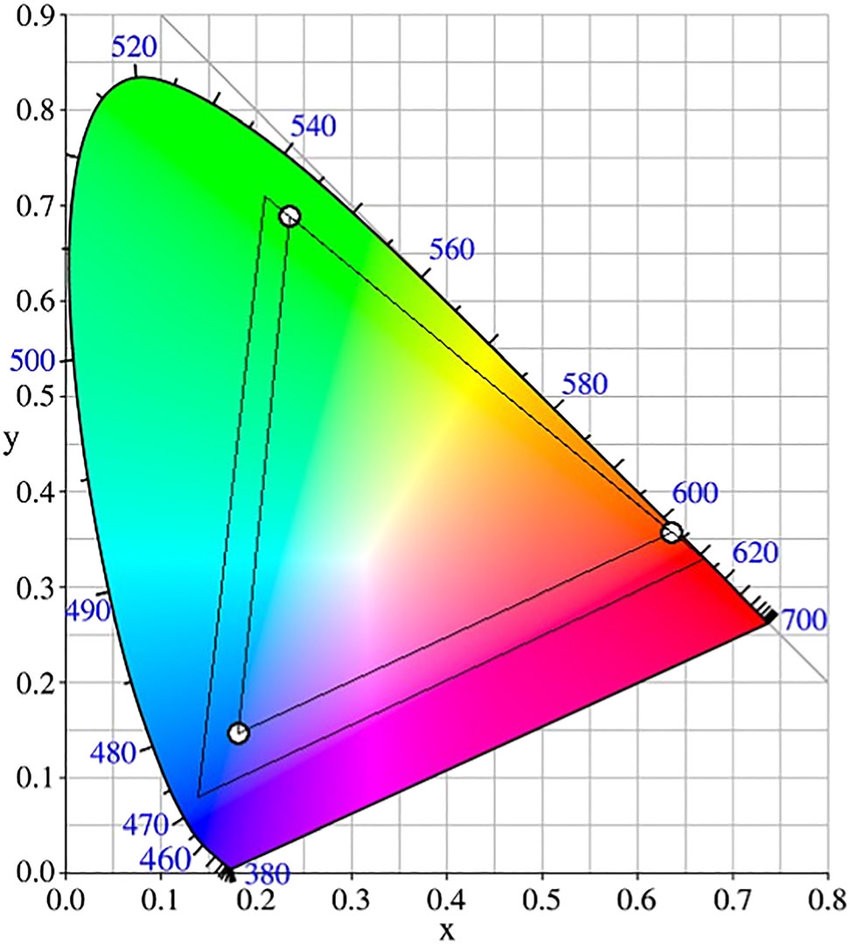I?m sure you recognize magenta ? it?s that color that?s a mix between purple and red. It?s sort of pinkish-purple, and looks something like this:

This would be well and good, except there?s a little problem with the statement above: on the spectrum of light, the color(s) between purple and red are as follows: yellow, green, blue, orange? etc. Instead, magenta manifests itself on the aptly-named color wheel, which illustrates colors fading into one another. Red and purple are the two ends of the spectrum, so on the color wheel, they naturally fade into one another.
So if it doesn?t exist, why can we see it? Again, on the spectrum of elements, all visible colors (and non-visible rays) have specific wavelengths which distinguish them from the other colors on the color wheel. Magenta, because it doesn?t exist on the light spectrum, doesn?t have one. Rather, it?s something our brain creates to fill in space in a way that makes sense.
Usually, when trying to determine color, the brain simply averages the colors to come up with an outcome. If you mix green and red light, you?ll end up with a yellow light because the brain has averaged it. When you mix red and purple light, your brain averages them. Ultimately, this would reasonably come out to green ? that?s the average wavelength ? but because your brain wants the outcome to make logical sense, it mixes the colors and you get magenta.

This is how we view most colors: as averages of three main colors. So which three? As it turns out, the brain only has three photoreceptors, and because of this, the three colors we can technically see are as follows:
- Red
- Blue
- And? green
This is why when you see colors labeled, you?ll often have a number that looks something like (r, g, b) (255, 0, 255) ? this is actually the number for Magenta ? which defines what amounts of each of the main colors go into the making of the end color. On this R, G, B spectrum, the maximum amount of any color is 225.

Arguably, color doesn?t actually exist because it?s just an interpretation made by our brains to distinguish different wavelengths from one another. Evolution-wise, this ability to see in color would have been more beneficial than seeing in black and white ? different fruits can be distinguished as ripe, different predators told apart better.
Other species throughout the animal kingdom have been found to have this ability, too ? and although humans have pretty decent color recognition, animals such as the Bluebottle Butterfly, which has 15 different photoreceptors. Different animals are able to see differently, with the bumblebee having three receptors, but further to the ultraviolet side to help them see more markings on plants.
All that said, let?s take a look back to magenta, the color which doesn?t exist. As it turns out, it?s not the only one.
The Black Sheep In The Grey Area: The Chimerical Colors
Magenta doesn?t exist because it has no wavelength; there?s no place for it on the spectrum. The only reason we see it is because our brain doesn?t like having green (magenta?s complement) between purple and red, so it substitutes a new thing.
That makes enough sense, right?
Well, then, here?s a new idea: magenta might not exist, but there are also ways to create imaginary colors ? colors that can?t exist, but which you can see temporarily by looking at a chimerical color demo template. This happens when you stare at one image for a bit, until some of the cells perceiving the color become tired. After this, you can switch to looking at another, very different color, which will let you see the imaginary colors.

As the template covers above, there are a couple impossible colors for you to try out, some of these types being mentioned above. However, there?s a little more about each of them than the image says, so without further ado, here?s a deeper run-down of what?s really being presented above.
- Stygian colors. Here, the color is due to the bright yellow, which causes a dark blue afterimage when you move to looking at the black background. The blue is visibly blue, but against the black, it appears to be as dark as the background while also blue. The result is an intensely saturated blue/black, distinguishable as both and neither at the same time.
- Self-luminous colors. In self-luminous colors, the colors appear to be emitting light, even on paper. Again, this is caused by fatigued cells. Here, the green causes a red afterimage, which ? when seen against white ? will appear often to be brighter than the background.
- Hyperbolic colors. In this case, the cyan results in an orange afterimage, which, when placed on top of the orange block, will create an oversaturated orange. A similar logic applies if you stare at some of that magenta we were discussing ? if you do, and then look at a leaf, it may appear over saturated in the same way the orange does.
These colors, although considered ?imaginary? are still interesting concepts, especially where the wavelengths are considered. Because these colors don?t exist, they don?t actually have wavelengths. If you try to determine one for hyperbolic orange, for example, you?ll wind up with regular orange, a balance of red and green with significantly more red.
Over all, the idea of color and the implications of it are indeed fascinating. It makes you wonder what the actual appearance of items in the universe is, if color is merely our interpretation of wavelength values. What is the actual look of our workspaces, of the food we eat? What we see may just be a lofty thought, nothing more than an idea. Then again, what if it?s not?
Thank you for reading my article! I hope you enjoyed it, and learned a little something ? or even have something more to think about! If you?d like to talk, comment, or question, you can find me at [email protected] or at LinkedIn under Amelia Settembre.


